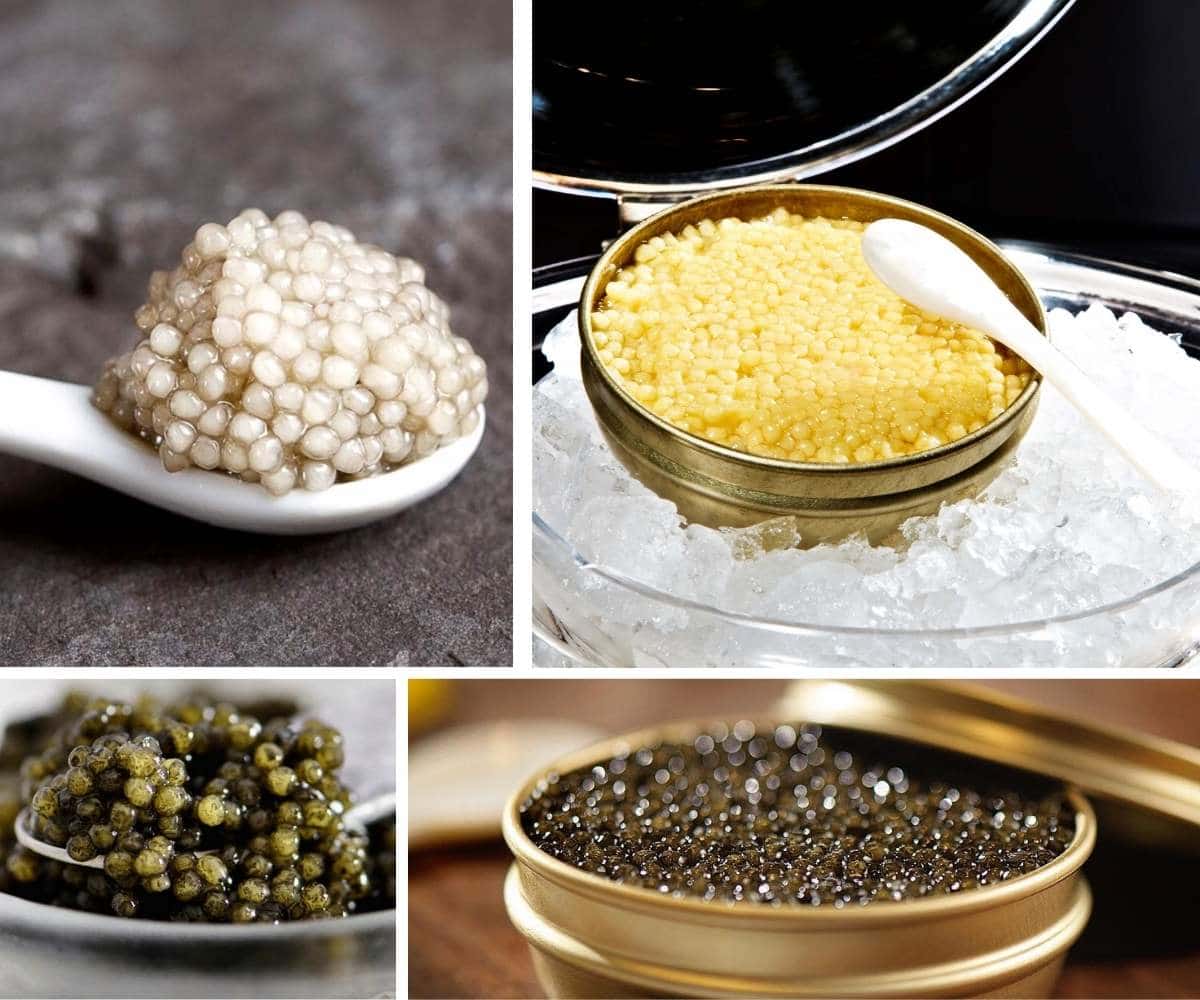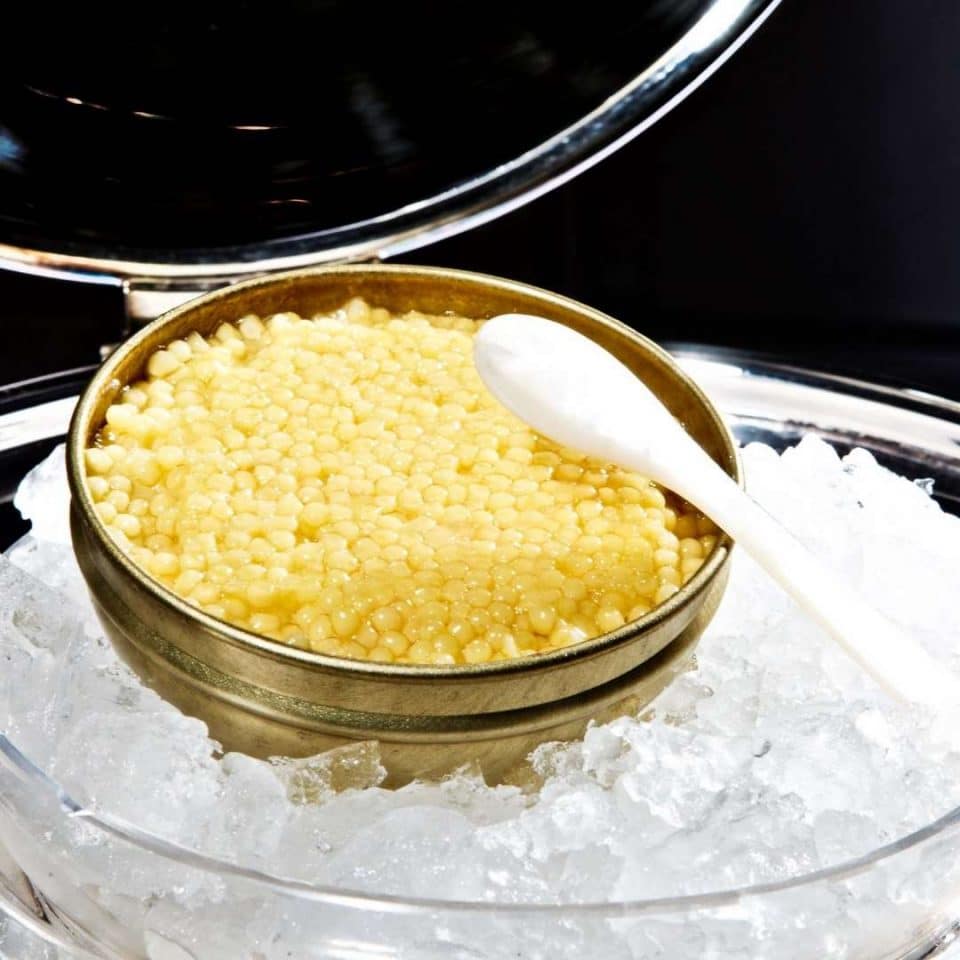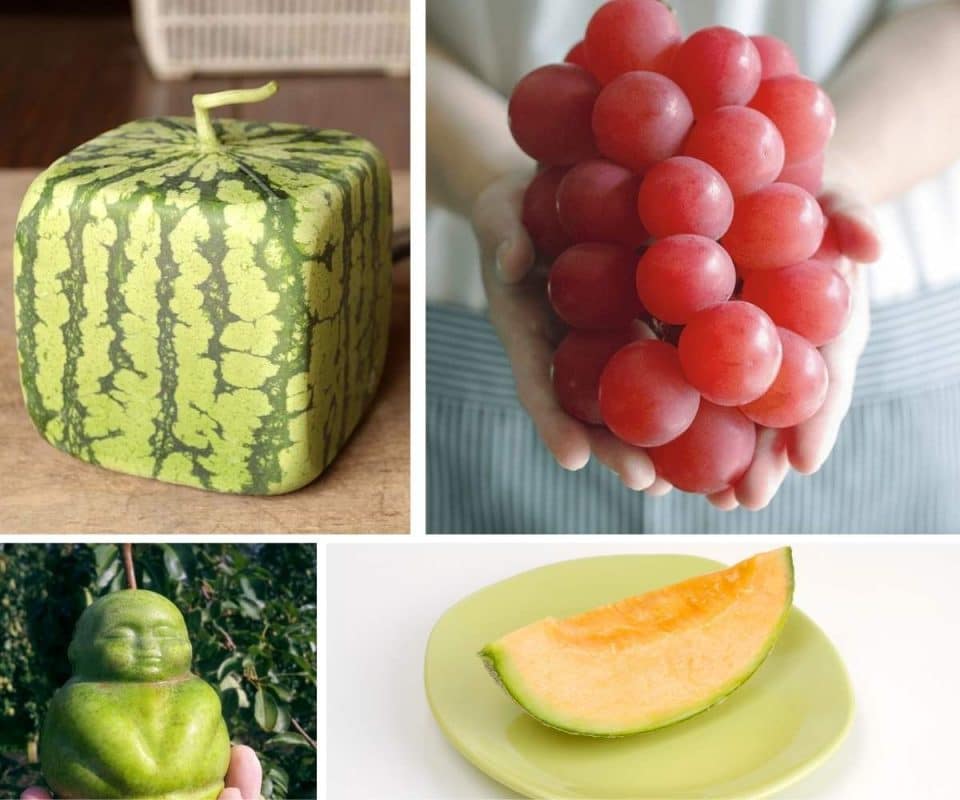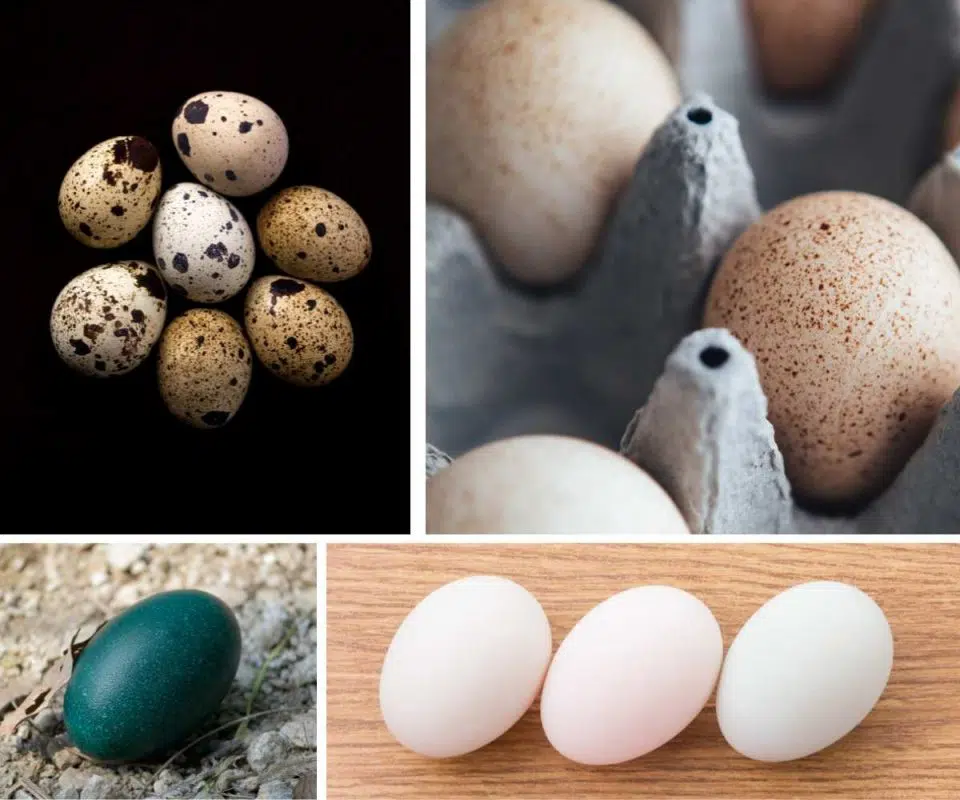Most Expensive Caviar (from $1,000 to $113,630)

If you’re looking to try the ultimate gourmet food, you’ve come to the right place. In this quick guide, we’ll take you on a tour of some of the best varieties of this luxury product anywhere in the world.
Let’s start with the basics. Classic caviar comes from the roe of the sturgeon fish, although you may also see salmon, trout, bowfin, or hackleback caviar on sale. Genuine, luxury caviar comes from one of four main varieties of sturgeon: Sterlet, Osetra (aka Ossetra, Asetra), Sevruga, and Beluga, which may be caught or farmed.
An adult Beluga can weigh up to 2,000lbs and produce 100lbs of roe. Unfortunately, it can take a sturgeon anything from ten to thirty-five years to reach maturity, which is one reason why caviar is so expensive. The rarity of the roe also determines the cost: larger, firmer pearls that “pop” in the mouth are less common and, therefore, command a premium price.
How should caviar be eaten? The finest caviar is traditionally only handled with a mother-of-pearl spoon to avoid the taste of metal corrupting the delicate flavor of the roe.
Beluga caviar is typically served alone, or perhaps Russian style, on blinis with sour cream and light garnishes. Still, today’s leading chefs are constantly innovating to create new ways to present this ravishing luxury product.
1. Strottarga Bianco: White Gold Caviar

Looking for something new to spread on your toast? Then you need to consider Strottarga Bianco, White Gold caviar.
According to Walter Grüll, the Austrian inventor of this incredibly rare delicacy, the market was out for a new luxury product. So he invented one. The caviar comes from the Siberian Albino Sturgeon, which takes ten years to raise. Once dehydrated, the eggs are sprinkled with 22-carat edible gold flakes.
This delicacy, which can be enjoyed with pasta or risotto, easily ranks as the world’s most expensive food. It’s sold for an eye-watering $113,630 per kilo or around $568 per teaspoon!
If you’re not into the edible bling, opt for a more modest $23,498 per kilo for the elegant white eggs alone. Each creamy mouthful will then cost a mere $117. Enjoy!
2. Almas Caviar: Iranian Beluga Caviar

The history of Almas caviar dates back millennia. The ancient Persians prized it, it was enjoyed by Alexander the Great, and, more recently, Peter the Great of Russia was an enthusiast. Almas means diamond in Russian, reflecting the sense of luxury and exclusivity of these creamy, nutty eggs that were once the preserve of the aristocracy.
They’re harvested from a rare albino sturgeon that is only found in the unpolluted waters of the south Caspian Sea and takes 25 years to grow to maturity.
Almas caviar is one of the most expensive food delicacies globally, fetching around $34,500 per kilo, which is equivalent to $172 per teaspoon.
3. Special Reserve Kaluga Huso Hybrid Caviar

This visually stunning farmed caviar is produced in small quantities from a cross between Kaluga and Amur sturgeons. You may find it referred to as River Beluga.
The large, soft, buttery eggs range in color from amber to shimmering jade. Its wonderfully balanced taste makes it prized worldwide, which is why it comes with a price tag of $16,000 per kilo. This true connoisseurs’ choice is one of the highest quality anywhere.
4. Beluga Hybrid Caviar

Developed in Italy when Beluga were considered an endangered species, Beluga Hybrid caviar is a premium variety sourced from a cross of the Beluga and Siberian sturgeons.
Beluga Hybrid has a milder taste than traditional Beluga caviar, with a slightly nutty flavor. The pearly brown eggs are firm and have a smooth, buttery texture. Its refined look and authenticity make it a favorite of connoisseurs worldwide, so expect to pay $6,000-$9,000 a kilo for this taste of luxury.
5. Golden Imperial Russian Osetra Caviar

Legend has it that when an Osetra caught in the Caspian sea laid golden pearls, its roe was instantly reserved for the Tsar alone. This outstanding caviar is prized for its large, intensely glossy yellow eggs.
These days Golden Imperial Russian Osetra caviar is farmed in several countries, including Russia and China. It sells for anything between $5,000 and $9,000.
6. Russian Volga Reserve Ossetra Caviar

The outstanding characteristic of this caviar is that it’s sourced from Osetra sturgeon aged 35 years or older.
As most Caspian caviar comes from fish that are between 10 and 20 years old, specimens of this age are rare, to say the least. However, their pearls offer a unique blend of brine and unsurpassed creaminess.
Because of the limited quantities available, you may not be able to source this premium product all year round. However, when it’s available, expect to pay between $5,000 and $6,000 per kilo.
7. Osetra Karat Gold Caviar

This premium caviar is produced in Israel from purebred Osetra sturgeon. They’re raised near the river Jordan, in the clear waters of snow melt from Mount Hermon.
As you’d expect, the result is spectacular. Large, well-flavored eggs are golden in color, with flecks of amber. They have a meltingly creamy texture with a slightly nutty taste. The cost is around $6,000 per kilogram.
8. Iranian Osetra Caviar

This highly sought-after Iranian Osetra Caviar is prepared by Iranian ‘salt masters’ using traditional techniques on the edge of the southern Caspian sea.
The result is these enormous and luscious gray-black pearls, which are only available in limited quantities. They sell for around $5,000 per kilo. However, caviar aficionados are happy to pay this for what they say is an unmatchable product.
9. Sevruga Classic Gray Caviar

This variety is farmed in the USA, with fingerlings (young sturgeon) sourced from the Caspian and Black seas.
Considered to be one of the highest quality caviars, it’s famed for its delicate yet juicy pale gray pearls and buttery texture. Sevruga Classic Gray has an intense creamy flavor and a subtle lingering aftertaste, making it unique. It sells for around $5,000 per kilo.
10. Iranian Sevruga Caviar

Experts acknowledge Iranian caviar as the best in the world. Their Sevruga is known as ‘the caviar of princes’, with good reason.
The Iranian Sevruga, aka the starry sturgeon, produces distinctive amber and gray-colored eggs and is famous for its delicate sea-scented flavor, which a real caviar-lover will genuinely appreciate
11. Russian Osetra Caviar

If you’re wondering how to distinguish Russian Osetra from Iranian Osetra, the answer lies in the color and size of the pearls. Russian Osetra features large, dark gray pearls. Though this can vary, it has a buttery texture and a lightly salted, nutty flavor.
Why? It is thought to be because the Osetra sturgeon is a bottom feeder, so the available food will influence the taste of its roe. However, as most Oestra are raised in aquaculture farms these days, producers can create the flavor they want. Russian Osetra typically sells for around $3,000 per kilo.
12. American Hackleback Caviar

Looking for home-grown caviar that won’t deplete wild stocks of the rarer sturgeon? Then the roe of the American Hackleback is an excellent alternative to the more traditional caviar varieties. The hackleback is a small sturgeon native to the Mississippi and Missouri river basins. Its tiny, jet-black pearls have a subtle texture and a somewhat earthy flavor.
American Hackleback is a popular and more economical alternative to imported osetra caviars and makes a perfect luxury hors d’oeuvre. You’ll find it priced at around $1,200 per kilo.
13. Organic Caviar

Suppose you’re looking for a luxury food but are also concerned about the purity, sustainability, and ethics of the caviar you choose. In that case, you’ll be glad to know that there are an ever-increasing number of organic caviar producers.
While many are springing up in Canada, the oldest producer of organic caviar is found in Andalucia, southern Spain. The sturgeon swim in the cold waters downstream from the Sierra Nevada mountain range where they take around 15 years to reach maturity. In common with all sturgeon raised for organic caviar, they’re not fed hormones to speed up this process or given antibiotics.
The price of organic caviars can vary from $1,000 to $3,000 per kilo.
Related: Most Expensive Cheeses in the World

Related: Most Expensive Salt in the World

Related: Most Expensive Spices in the World

Related: Most Expensive Fruits in the World

Related: Most Expensive Eggs in the World

Related: Most Expensive Milk in the World


